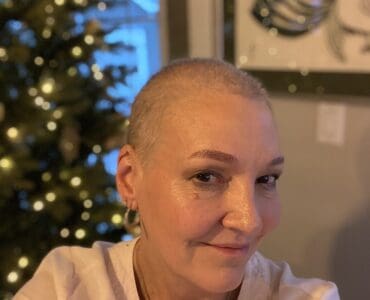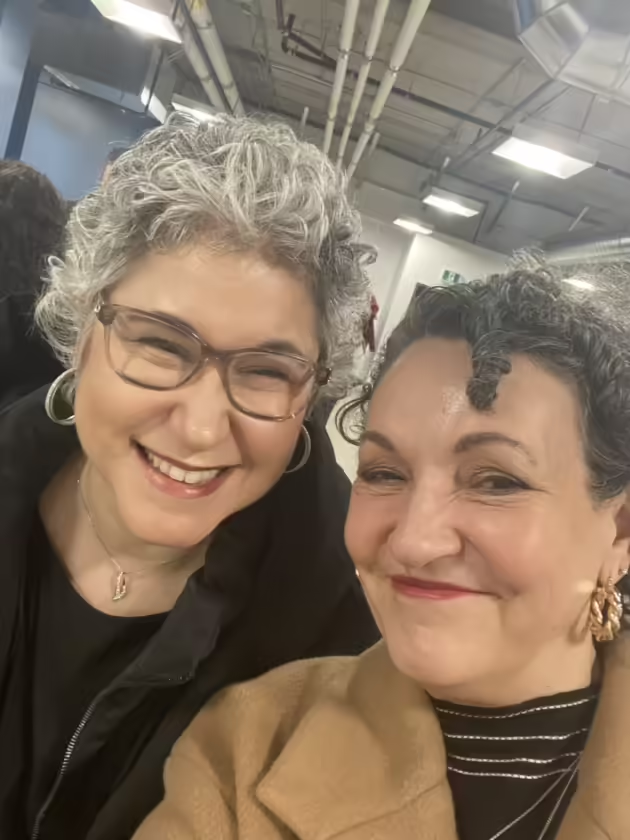If you’ve experienced the kind of hot flash that feels like an internal furnace suddenly flipped to maximum, you’re not alone. For many of us—especially breast cancer survivors who can’t use hormone replacement therapy (HRT)—hot flashes are one of the most frustrating side effects of menopause and treatments like aromatase inhibitors.
As someone who’s on letrozole and navigating surgical menopause myself, I can relate. The combination of breast cancer treatment and estrogen depletion can leave you feeling like your body has a mind of its own. But here’s the good news: there are real, science-backed ways to reduce both the frequency and intensity of hot flashes—without hormones.
Let’s explore what works, what doesn’t, and how to find calm and comfort again.
Why Hot Flashes Happen
Hot flashes are your body’s reaction to fluctuating (or depleted) estrogen levels, which affect how your brain regulates temperature. When estrogen levels drop, the hypothalamus—the body’s thermostat—becomes more sensitive to small changes in temperature and triggers heat-release mechanisms, like dilating blood vessels and activating sweat glands.
For women who have had hormone-positive breast cancer, estrogen isn’t just low—it’s deliberately suppressed through treatments like letrozole, anastrozole, or exemestane. That’s why these hot flashes can feel particularly intense and long-lasting.
Non-Hormonal Strategies That Work
1. Lifestyle and Environment Adjustments
These simple changes may sound small, but they add up:
- Dress in layers of breathable fabrics like cotton or bamboo so you can cool down quickly.
- Lower room temperature—a fan or cool pack under your pillow can help at night.
- Avoid triggers like alcohol, spicy foods, caffeine, and stress (yes, stress can trigger hot flashes too).
- Stay hydrated. Dehydration worsens the sensation of heat.
- Practice paced breathing—deep, slow breathing for several minutes can help calm your body’s response.
2. Mind-Body Techniques
Research increasingly supports the mind-body connection in managing hot flashes. Try:
- Yoga and gentle stretching. Not only can yoga help with body temperature regulation, but it also reduces anxiety and improves sleep.
- Meditation and mindfulness. Daily short practices lower the stress hormone cortisol, which can reduce the frequency and intensity of flashes.
- Cognitive Behavioral Therapy (CBT). Studies have shown CBT can significantly improve how women experience and cope with hot flashes.
📘 Learn more: NIH – Nonhormonal Management of Hot Flashes
3. Non-Hormonal Medications
For some, lifestyle changes aren’t enough. There are non-hormonal prescription options your oncologist or menopause specialist might discuss with you:
- SSRIs and SNRIs (like venlafaxine, paroxetine, or citalopram) have been shown to reduce hot flash frequency by up to 60%.
- Gabapentin and pregabalin, typically used for nerve pain, can also help calm the nervous system response that drives hot flashes.
- Oxybutynin, used for bladder control, has shown promising results for menopausal symptom relief.
- Fezolinetant (Veozah), a new FDA-approved, non-hormonal medication, targets the brain’s temperature control center directly and is a breakthrough for women who can’t take estrogen.
Always check with your healthcare team before starting any new medication—especially if you’re on cancer treatments like letrozole or tamoxifen.
4. Nutrition and Supplements
There’s no one magic supplement, but a nutrient-rich diet can make a difference:
- Eat whole foods—plenty of vegetables, fruits, whole grains, lean proteins, and omega-3 fats (salmon, chia, flaxseed).
- Limit sugar and refined carbs, which can spike insulin and worsen symptoms.
- Stay curious but cautious about supplements. Some women explore black cohosh or soy isoflavones, but evidence is mixed—and these are not recommended for women with hormone-positive breast cancer.
Always consult your oncologist before adding any supplement to your regimen.
5. Cooling and Comfort Tricks
Sometimes, immediate comfort is key:
- Keep a cold water spray or chilled washcloth nearby for sudden flushes.
- Use a cooling pillow or weighted blanket designed for hot sleepers.
- Try cooling necklaces or wristbands that use phase-change material to absorb heat.
These small tools can help you feel more in control when a wave hits.
6. Sleep: The Ultimate Reset
Hot flashes and night sweats often wreak havoc on sleep—but restorative rest is essential for healing.
- Keep your bedroom cool and dark.
- Use moisture-wicking pajamas and sheets.
- Practice sleep hygiene: no screens an hour before bed, limit caffeine after noon, and try a short evening meditation or gentle yoga flow.
A rested body is a more resilient body.
Living Well With Hot Flashes: My Experience
For me, living with hot flashes on letrozole has been an ongoing experiment in patience and problem-solving. I’ve learned to view them not as interruptions, but as reminders that my body is healing and adapting to a new phase of life.
Yoga, hydration, and keeping my environment cool have been my anchors. And while the heat still comes and goes, I’m grateful that it reminds me I’m still very much alive—still here, still thriving, and still finding balance.
Remember: You’re Not Alone
Hot flashes are one of the most common—and least talked about—symptoms for breast cancer survivors. But with information, support, and self-compassion, you can navigate them and still feel like yourself again.
For more resources on managing menopausal symptoms and living well after breast cancer, visit:
👉 AskEllyn.ai – Navigating Menopause After Breast Cancer
👉 AskEllyn.ai – Understanding Aromatase Inhibitors and Their Side Effects
And for medical information, visit:




